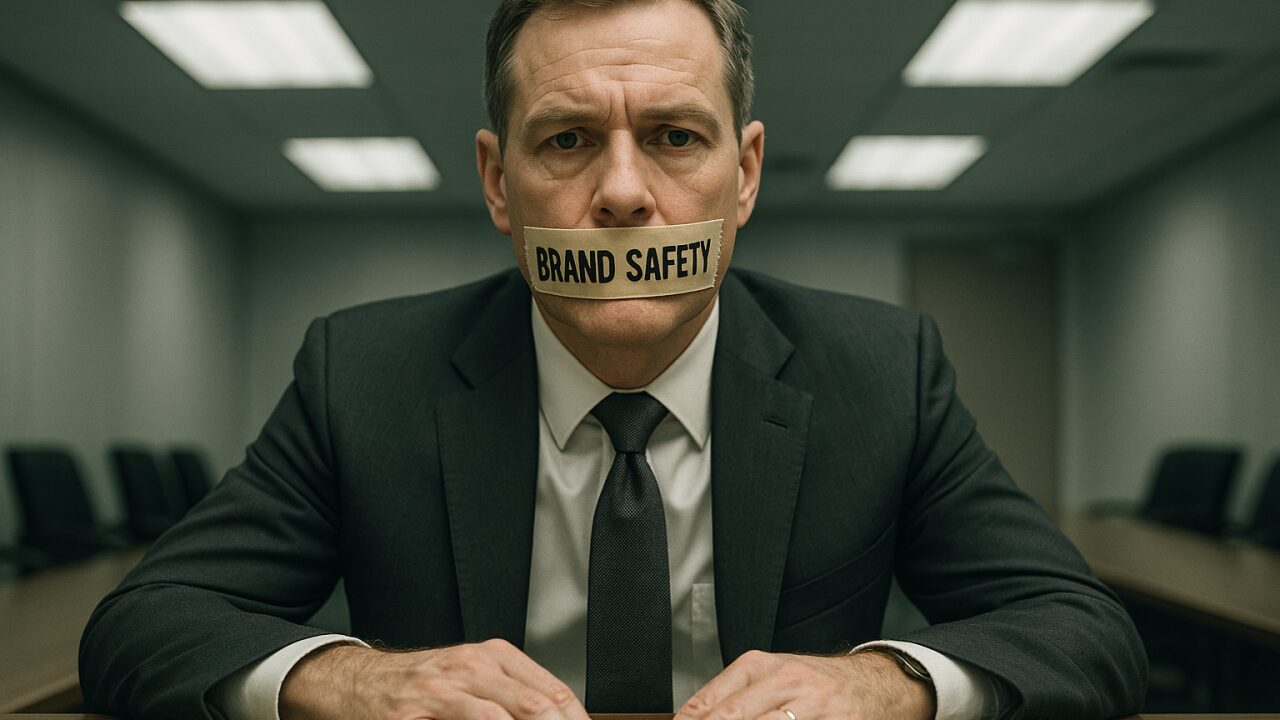There’s this word “authenticity” that’s been rattling around boardrooms, marketing decks, and influencer captions for so long that it’s become almost intolerable, like a pop song you once loved and now can’t stand because it’s been on repeat in every Uber you’ve taken for the last three years. Once upon a time, authenticity meant something modest: consistency, honesty, the ability to be what you say you are. It was boring, almost quaint. But in 2025 authenticity has mutated into something closer to performance art. And not the good kind. More like reality TV with better lighting and a corporate logo in the corner.
Brands don’t just exist anymore; they perform existence. They rehearse their sincerity, edit it, package it, and then blast it into your feed under the guise of “being real.” A CEO cries on Zoom while announcing layoffs, and maybe the tears are real, but the choice to hit “record” has already transformed them into theater. A snack brand launches a campaign called “Radical Honesty” where it confesses its products are unhealthy, complete with stylized infographics and hashtags so clean they could be in a museum. An athletic company releases a “behind the scenes” video showing its designers debating ethics in moody black-and-white, which feels less like documentary and more like a perfume ad. Sincerity has been storyboarded. Vulnerability has a production budget.
And, depressingly, it works. Vulnerability, even curated vulnerability, buys legitimacy. The messier it looks, the more “authentic” it feels. We forgive mistakes if they come wrapped in shaky camera footage and self-flagellating captions. We share the apology if it feels “raw,” even though it was polished by a social team and a legal department. Scholars have been writing about this for years: Beverland showed how even luxury wines could craft “authenticity” as a brand strategy, and Papadopoulou et al. more recently found that authenticity increases forgiveness. In other words: you don’t need to be authentic, you just need to simulate authenticity convincingly enough for consumers to give you a pass.
But here’s the treadmill: once you start performing authenticity, you can’t stop. It escalates. Yesterday’s brave confession is today’s baseline. If last quarter you revealed your supply chain failures, this quarter you better confess your carbon footprint, your pay gap, and maybe your CEO’s therapist’s notes. Otherwise, the silence is read as guilt. Consumers have been trained to expect cliffhangers. Every act of vulnerability sets up the next one. Brands are no longer companies, they’re serialized dramas where every episode has to be “we’re even more real than last time.”
And this leads to the paradox. The harder you try to look authentic, the faker you become. Today’s audience is composed of professional skeptics raised on decades of advertising spin. They know when the curtain has been deliberately ripped to look torn. They know when “raw” footage has been through three editing rounds. They know when the brand is not speaking but performing speech. Authenticity becomes just another KPI, another item on the quarterly dashboard.
So maybe the way forward isn’t to crank up the sincerity dial even more, but to step off the stage entirely. To refuse the performance. To let actions exist without the breathless narration. To let policies speak without pastel graphics. To let change be noticed rather than announced. Silence is terrifying in a world where noise equals existence, but imagine a brand that doesn’t scream its authenticity and instead just lives it. That might be the boldest move of all.
So here’s the dare, and it’s not inspirational-poster material, it’s more like the scribble you’d write in the margins of a meeting you secretly hate: stop performing. Don’t post the crying-CEO video, don’t publish the pastel apology letter in Helvetica Neue, don’t choreograph the “radical honesty” campaign with three focus groups and an AI prompt library. Just-do-he-thing. Fix the policy. Change the product. Pay the people. And then sit in the terrifying silence that comes from not broadcasting it. Maybe nothing happens. Maybe your brand vanishes into the algorithmic soup, buried under dance challenges and crypto scams. Or maybe-a-nd here’s the twist nobody wants to test, people finally believe you more when you don’t shove your sincerity down their throats.
The most radical performance in 2025 might just be no performance at all.
Your move.





